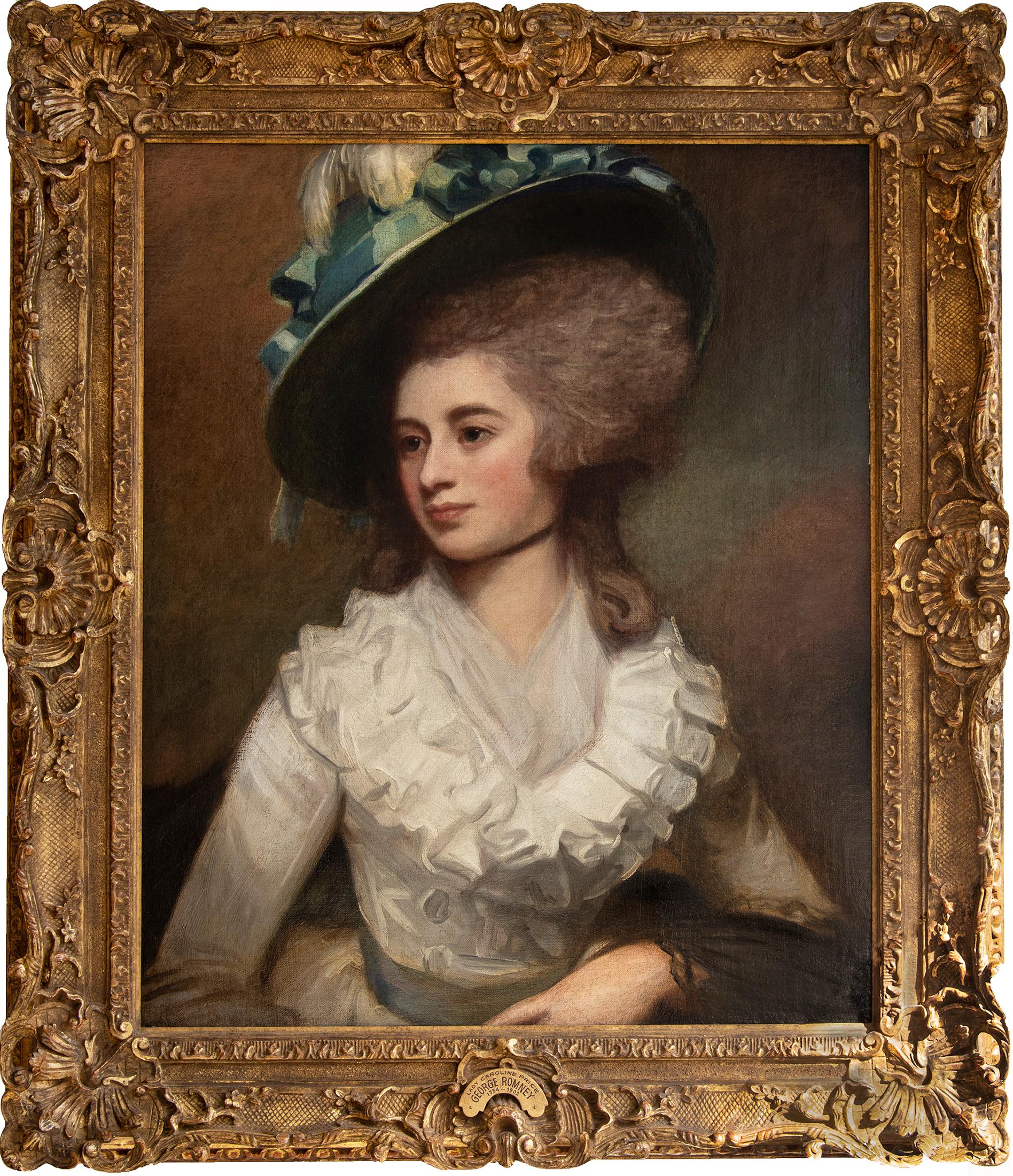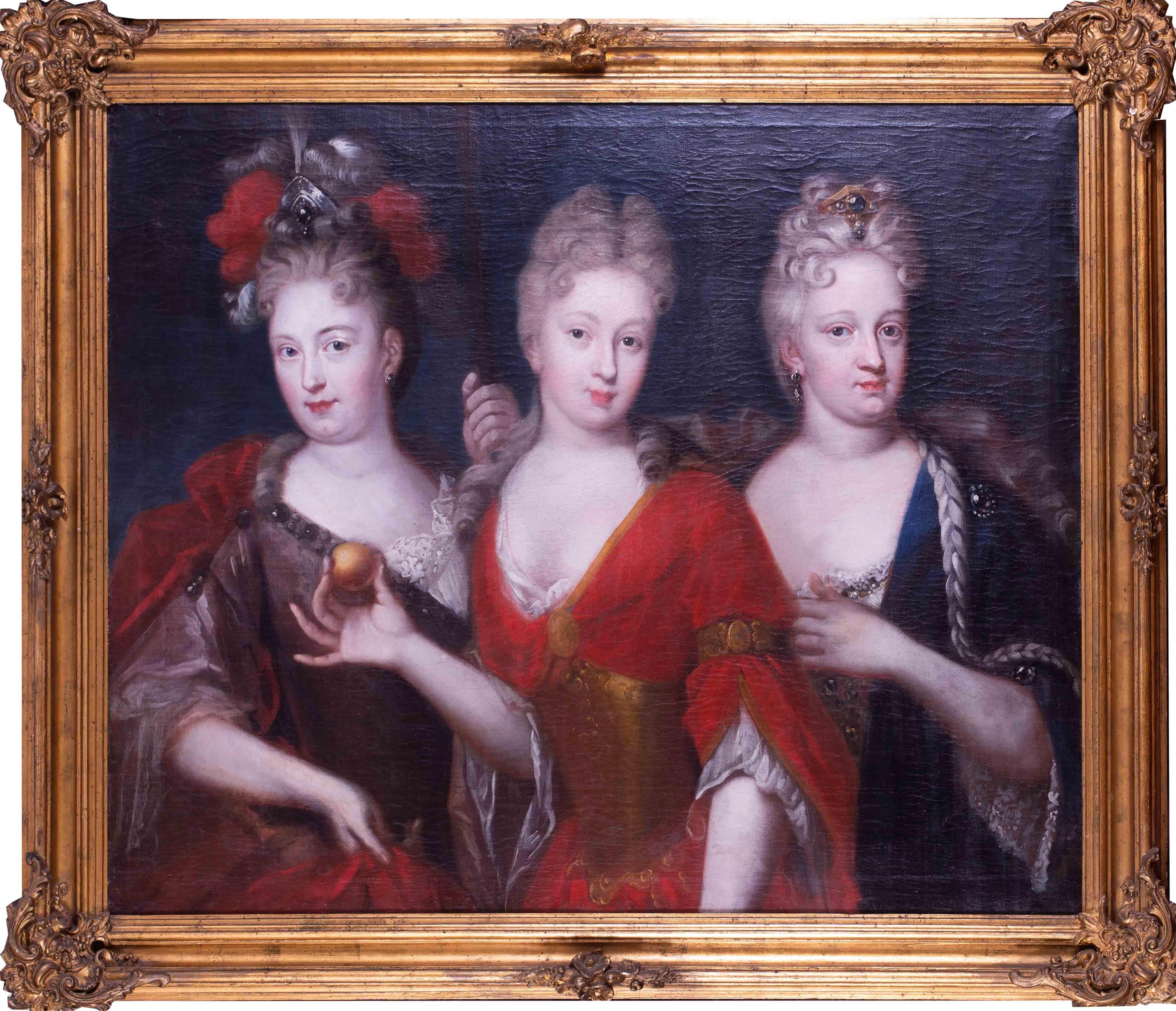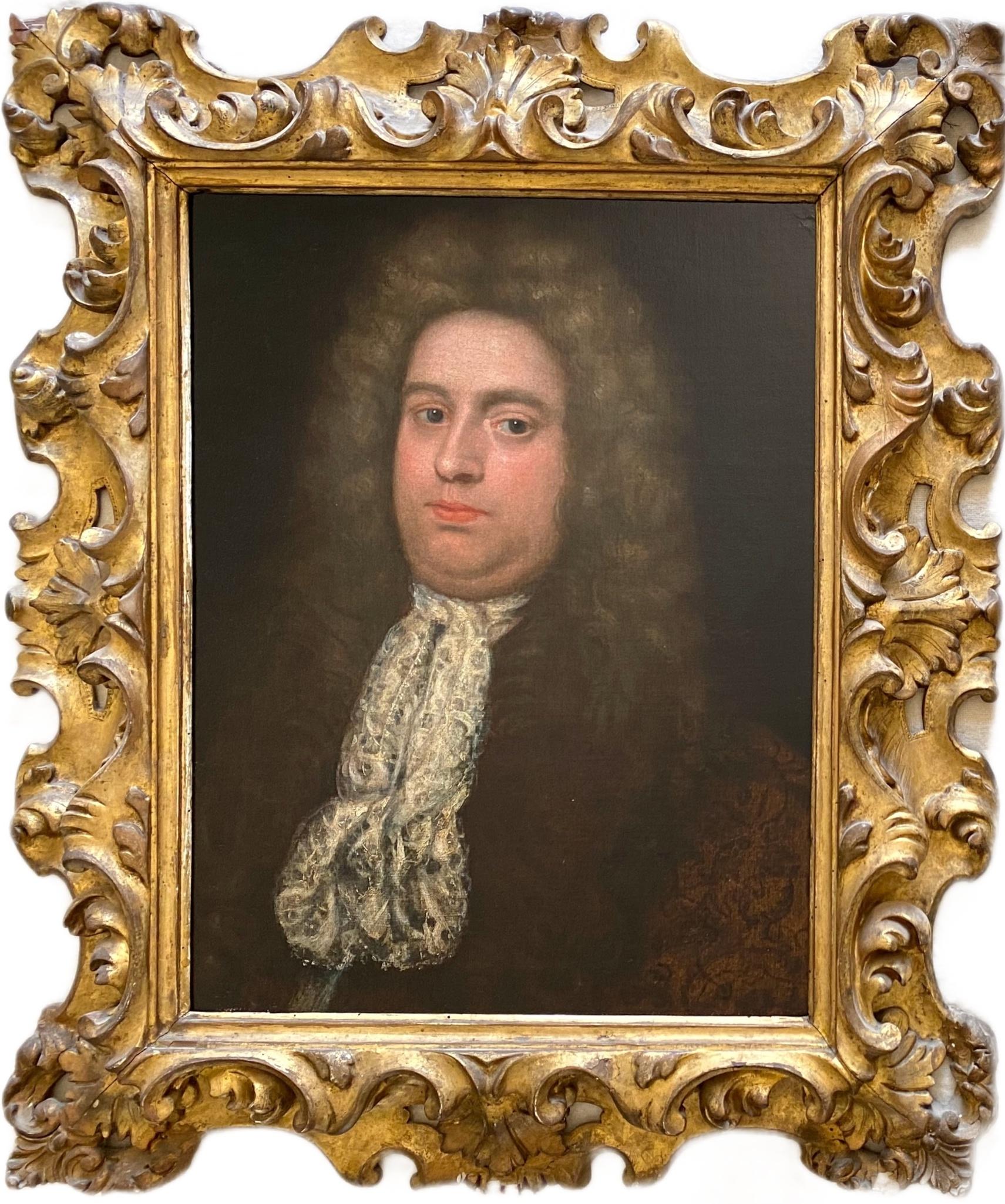Items Similar to 17th century old master portrait of Emperor Rudolph II
Want more images or videos?
Request additional images or videos from the seller
1 of 12
17th century old master portrait of Emperor Rudolph II
About the Item
"Portrait of Emperor Rudolph of Austria (1557-1619)" circle or studio of Josef Heinz the Elder
Emperor Rudolph II, born in 1552, was a visionary ruler whose reign as the Holy Roman Emperor from 1576 to 1612 left an indelible mark on European history. He was a passionate patron of the arts, sciences, and intellectual pursuits, transforming his court in Prague into a vibrant hub of creativity and innovation. Rudolph's deep appreciation for culture and learning fostered an environment where scholars, artists, and thinkers flourished. He generously supported astronomers like Tycho Brahe and Johannes Kepler, whose groundbreaking work revolutionized our understanding of the cosmos. In addition to his patronage of science, Rudolph II was a connoisseur of art and amassed an impressive collection of masterpieces, contributing to the cultural richness of his era. His famed Kunstkammer, or Cabinet of Curiosities, showcased wonders from around the world and inspired curiosity and wonder among his subjects. Despite the challenges of his time, including religious tensions and political intrigues, Rudolph II's commitment to fostering intellectual curiosity and creativity endured. His legacy as a forward-thinking ruler and patron of the arts continues to inspire generations, reminding us of the transformative power of curiosity and innovation.
The portraits of Emperor Rudolph II, painted by artist Josef Heintz d. Ä., serve as a poignant reminder of his multifaceted persona – a statesman, a patron of the arts, and a ruler whose reign left an enduring impact on the course of European history. Through his political achievements and cultural contributions, Rudolph II secured his place among the notable figures of the Renaissance and Baroque eras, leaving behind a legacy that continues to resonate centuries later.
Measurements:
Oil on canvas 63 by 44 cms
Provenance:
Private collection Germany
Literature on the sitter:
1. "The Reign of Matthias, 1612-1619" by Robert Bireley
2. "Matthias, Holy Roman Emperor: The Kaiser in an Age of Turbulent Change" by Andrew Latham
3. "Matthias: Emperor of the Romans, 1557-1619" by Brendan Simms
4. "Emperor Matthias and the Council of Vienna" by Joseph F. Patrouch
- Dimensions:Height: 26.78 in (68 cm)Width: 17.33 in (44 cm)
- Medium:
- Movement & Style:
- Circle Of:Josef Heinz the Elder (1564 - 1609, Swiss)
- Period:
- Framing:Frame IncludedFraming Options Available
- Condition:Lovely and ready to hang. Small bump in the upper left quadrant.
- Gallery Location:Antwerp, BE
- Reference Number:1stDibs: LU1423214176382
About the Seller
5.0
Platinum Seller
These expertly vetted sellers are 1stDibs' most experienced sellers and are rated highest by our customers.
Established in 2020
1stDibs seller since 2020
348 sales on 1stDibs
Typical response time: 1 hour
- ShippingRetrieving quote...Ships From: Antwerp, Belgium
- Return PolicyA return for this item may be initiated within 2 days of delivery.
More From This SellerView All
- 18th century Portrait of a lady as Erato, the muse of poetry - Angelica KauffmanBy Angelica KauffmannLocated in Antwerp, BE18th century English school portrait of a lady, said to be Mrs. John Ruscombe of Colne, Lancaster, as the muse Erato This very skilfully painted portrait depicts a lady as the muse Erato, playing the Lyre. Her eyes are filled with emotion and her lips are curved in a soft, delightful smile. Hinting at the love song she is composing? Erato is one of the nine Muses in Greek mythology. She is the muse of lyric poetry, love poetry, and mimicry. Erato is often depicted holding a lyre, symbolizing her association with music and poetry. She inspires poets and writers to create works that celebrate love, beauty, and human emotions. Our painting was sold in the early 1900s as a work by Angelica Kauffman. Kauffman was an 18th-century Swiss Neoclassical painter who achieved significant success and recognition in a male-dominated art world. Born in Switzerland in 1741, she showed exceptional talent from a young age and received formal art training in Italy. Kauffman gained fame for her historical and mythological paintings, as well as her portraits, which were characterized by their grace, elegance, and classical influences. She was a founding member of the Royal Academy of Arts in London and enjoyed patronage from aristocrats and royalty throughout Europe. Kauffman's work contributed to the rise of Neoclassicism and she remains one of the most prominent female artists of her time. Measurements: Oil on canvas ca. 98 by 77cm and with the frame ca. 118 by 97 cm Provenance: Collection of Felix Gouled American Art Association, Anderson Galleries, by 1937 Kende Galleries at Gimbel Brothers, Jay Gould...Category
18th Century Old Masters Portrait Paintings
MaterialsCanvas, Oil
- 17th century Old Master Portrait of Queen Catherine of BraganzaBy Jacob HuysmansLocated in Antwerp, BEVery fine old master Portrait painting of Queen Catherine of Braganza as Saint Catherine attributed to Jacob Huysmans and studio Catherine of Braganza...Category
17th Century Old Masters Portrait Paintings
MaterialsOil, Canvas
- 17th century Flemish Old Master - A young boy enjoying a pie, allegory of tasteLocated in Antwerp, BE17th century Flemish old master painting, Allegory of taste The very fine painting depicts a young boy, cheekily tasting a delicious pie. He's looking at the viewer with eyes twinkl...Category
17th Century Old Masters Figurative Paintings
MaterialsCanvas, Oil
- 17th century Old Master painting - Allegory of Justice - truth demons skeletonLocated in Antwerp, BELate 17th, early 18th century old master oil painting depicting an allegory of Lady Justice holding demons at bay Our painting, likely a sketch for a much larger work,, conveys a pr...Category
18th Century Old Masters Figurative Paintings
MaterialsCanvas, Oil
- 17th century Flemish Old master - Silenus feasting - Wine GodLocated in Antwerp, BE17th century old master painting "Silenus feasting", likely studio of Sir Anthony Van Dyck Born in Antwerp in 1599, Anthony Van Dyck entered the studio of Rubens (1577 - 1640) at the age of nineteen. Quickly, the master perceives the talents of the young prodigy and makes him his first assistant. Van Dyck, for his part, has a particular admiration for the man whose name is known throughout Europe. In 1619, he was inspired by a drunken Silenus by Rubens, produced one or two years earlier for a composition on the eponymous theme. This work, now in the Dresden Museum, appears to be the first version of our painting. That work has an illustrious provenance; it was recorded in the private collection of Leopold Wilhelm (Archduke of Austria) in 1662, in 1722 it was bought by the famous German painter Antoine Pesne for the King of Saxony in Dresden (Staatliche Kunstsammlungen Dresden - Gemäldegalerie Alte Meister, Dresden, inventory number 1017). From 1945 until 1955 it was on display at the Pushkin Museum in Moskou, after having been taken by Russia after the Second World War. It was then returned to the Staatliche Kunstsammlungen Dresden where it is still on display. Our painting is of a fine quality and has been painted by a skilled and confident hand. It displays some slight variations in the composition when compared to the original; the legs of Silenus are smoother and less hairy, more humanoid than satyresque. There might also be a pentimento visible at the level of the legs where one observes traces of hair on and under the material. This area can be compared to that of a canvas by Van Dyck kept in Brussels, of a still drunk Silenus whose animal legs are formally treated in the same way as the ones in our composition. Furthermore, the skirt of the figure to the far left has a purplish-red colour in our work, whereas in the first version it appears to be white. There also appear to be differences in the sky, firstly the clouds are shaped slightly different, the sky in our painting has a more vivid colour and there is also a golden hue of a sunset visible to the far left. This treatment of the background appears close to that of a Saint Rosalie, now kept at the Metropolitan Museum in New York and dated 1625, which might offer a reference for dating our painting. In the evanescent aspect, as non finito of its figures, it is interesting to compare our Silenus to a Saint Sebastian, conserved in the Escorial Museum in Madrid. Also, the theme remains rather curious. According to Barnes and Porter, Rubens, like Van Dyck after him, was partly inspired by Book XI of Ovid's Metamorphoses, but a second literary or pictorial source remains unknown (1). For the original composition, Stephan Maaser, art historian, establishes a correspondence between the position of Silenus, referring to that of a Christ at the moment of the Lamentation or the Descent from the Cross (2); the female characters on the left and the male on the right refer more to Mary Magdalene and Saint John than to the Phrygians or the members of a bacchanalian procession. Finally, note that Silenus is not usually a faun. The success of the composition at the time of its public reception and its engraving by Franciscus van der Steen really contributed to the dissemination of the work. At the same time, it testifies to the intense activity of the painter and his studio in Antwerp, before he left to work at the English court. About Silenus: In greek mythology, Silenus was the tutor and foster-father of the wine god Dionysos, who was entrusted to his care by Hermes after his birth from the thigh of Zeus. The young god was raised by Silenus and nursed by the Nysiad nymphs in a cave on Mount Nysa. Silenus was, in essence, the spirit of the treading dance of the wine-press, his name being derived from the words seiô, "to move to and fro," and lênos, "the wine-trough." Once, when Dionysos was travelling through Phrygia, Seilenos became lost and was captured by King Midas. The king treated him hospitably and as a reward Dionysos granted him his golden touch. The artists biography: Born in Antwerp on 22 March 1599, Anthony van Dyck was the seventh child of Frans van Dyck, a wealthy silk merchant, and Maria Cuypers, who was renowned for her embroidery skills. In 1609, when he was ten years old, his parents apprenticed the precocious youth to Hendrik van Balen (1575-1632), a painter of small cabinet pictures and dean of the city's Saint Luke's Guild. Although the length of Van Dyck's stay with Van Balen is not known, it probably lasted three to four years. Van Dyck registered as a master in the Antwerp Saint Luke's Guild on 11 February 1618, by which time he was already in demand as a portrait painter (see the NGA painting, Portrait of a Flemish Lady...Category
17th Century Old Masters Figurative Paintings
MaterialsOil, Canvas
- 18th century French Old Master Portrait of a woman - Female Oriental QueenLocated in Antwerp, BEFrench 18th century old master portrait of a majestic and elegant lady. The aristocratic lady gazes at the viewer with a kind and enigmatic smile and twinkling eyes. In comparison w...Category
1740s Old Masters Portrait Paintings
MaterialsOil, Canvas
You May Also Like
- Head of an AngelLocated in New York, NYProcaccini was born in Bologna, but his family moved to Milan when the artist was eleven years old. His artistic education was evidently familial— from his father Ercole and his elder brothers Camillo and Carlo Antonio, all painters—but his career began as a sculptor, and at an early age: his first known commission, a sculpted saint for the Duomo of Milan, came when he was only seventeen years old. Procaccini’s earliest documented painting, the Pietà for the Church of Santa Maria presso San Celso in Milan, was completed by 1604. By this time the artist had made the trip to Parma recorded by his biographers, where he studied Correggio, Mazzola Bedoli, and especially Parmigianino; reflections of their work are apparent throughout Procaccini's career. As Dr. Hugh Brigstocke has recently indicated, the present oil sketch is preparatory for the figure of the angel seen between the heads of the Virgin and St. Charles Borrommeo in Procaccini's altarpiece in the Church of Santa Afra in Brescia (ill. in Il Seicento Lombardo; Catalogo dei dipinti e delle sculture, exh. cat. Milan 1973, no. 98, pl. 113). As such it is the only known oil sketch of Procaccini's that can be directly connected with an extant altarpiece. The finished canvas, The Virgin and Child with Saints Charles Borrommeo and Latino with Angels, remains in the church for which it was painted; it is one of the most significant works of Procaccini's maturity and is generally dated after the artist's trip to Genoa in 1618. The Head of an Angel is an immediate study, no doubt taken from life, but one stylistically suffused with strong echoes of Correggio and Leonardo. Luigi Lanzi, writing of the completed altarpiece in 1796, specifically commented on Procaccini's indebtedness to Correggio (as well as the expressions of the angels) here: “Di Giulio Cesare...Category
17th Century Old Masters Figurative Paintings
MaterialsPaper, Canvas, Oil
- 17th Century by Giuseppe Assereto Portrait of an Elderly Woman Oil on CanvasBy Giuseppe AsseretoLocated in Milano, LombardiaGiuseppe Assereto (Genova - 1626 ca – Genova 1656/57) Portrait of an elderly woman, possible portrait of Maddalena Massone, wife of Gioacchino Assereto Oil on canvas, cm. 65,5 x 51,5...Category
Early 17th Century Old Masters Portrait Paintings
MaterialsCanvas, Oil
- Portrait of Lady Caroline PriceBy George RomneyLocated in Miami, FLDESCRIPTION: Perhaps the best Romney in private hands. If Vogue Magazine existed in the late 18th century, this image of Lady Caroline Price would be ...Category
1970s Old Masters Portrait Paintings
MaterialsCanvas, Oil
- Rare and fascinating 17th Century German Classical British royalty Old MasterBy (Circle of) Godfrey KnellerLocated in Petworth, West SussexCircle of Godfrey Kneller (German, 1646 – 1723) Amelie Sophia von Wendt as Aphrodite in the judgement of Paris, later as King George II’s Courtesan, bestowed the title of the Countess of Yarmouth. oil on canvas 34.1/4 x 41 in. (87 x 104 cm.) Provenance: Historically at Bruggen Castle...Category
17th Century Old Masters Portrait Paintings
MaterialsOil, Canvas
- 16th Century by Bernardino Detti Face of Christ Oil on CanvasLocated in Milano, LombardiaDimensions: 41 x 32 cm without frame - 47 x 55.5 cm with frame Antique box frame made of solid wood and walnut burl. Publications: unpublished The painting by Bernardino Detti (14...Category
16th Century Old Masters Figurative Paintings
MaterialsCanvas, Oil
- 17th Century English Portrait of Admiral Horatio Nelson's great grandfatherLocated in Norwich, GBA fascinating portrait dating from circa 1695-1700 with wonderful provenance: it belonged to the British industrialist Leonard Pelham Lee (1903–1980) and hung in his manor house in W...Category
17th Century Old Masters Portrait Paintings
MaterialsOil, Canvas





